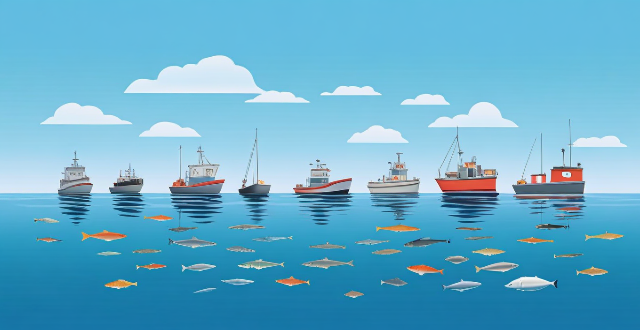Climate models are essential for predicting future fishery yields by analyzing ocean conditions, projecting changes in fish population dynamics, and evaluating potential impacts on management strategies. They help identify shifts in habitats, migration patterns, growth rates, recruitment success, mortality rates, fishing quotas, spatial management needs, and diversification opportunities. This knowledge aids in developing resilient and adaptive approaches to ensure the long-term sustainability of fisheries resources amidst climate change.

The Role of Climate Models in Predicting Future Fishery Yields
Climate models are essential tools for predicting future fishery yields. They help us understand how changes in climate will affect the ocean environment and, consequently, the productivity and distribution of fish populations. In this article, we will explore the various ways in which climate models contribute to our understanding of future fishery yields.
1. Assessing the Impact of Climate Change on Ocean Conditions
Climate models can provide valuable insights into how changing climate conditions may impact ocean temperature, salinity, and circulation patterns. These factors are critical for the survival and reproduction of many fish species, as well as for the growth and development of their prey. By analyzing these data, scientists can identify potential changes in fish habitats and migration patterns, which can then be used to inform management strategies for sustainable fishing practices.
Key Points:
- Ocean Temperature: Warming waters can lead to changes in the distribution and abundance of fish populations.
- Salinity: Changes in salinity levels can affect the availability of nutrients and oxygen in the water column, impacting fish growth and survival.
- Circulation Patterns: Alterations in ocean currents can influence the movement of fish populations and their access to food sources.
2. Projecting Changes in Fish Population Dynamics
Climate models allow researchers to simulate the effects of climate change on fish population dynamics by incorporating information about environmental variables such as temperature, salinity, and primary productivity. This enables them to predict how fish populations might respond to different climate scenarios over time. For example, some species may experience reduced growth rates or increased vulnerability to disease under certain conditions, while others may thrive in warmer waters.
Key Points:
- Population Growth Rates: Climate models can help estimate how fast fish populations might grow or decline under different climate scenarios.
- Recruitment Success: Models can also predict variations in recruitment success, which is crucial for maintaining healthy fish stocks.
- Mortality Rates: Changes in mortality rates due to factors like predation or disease can be projected based on climate model outputs.
3. Evaluating Potential Impacts on Fisheries Management Strategies
Climate models play a vital role in evaluating potential impacts on fisheries management strategies. By incorporating climate model predictions into decision-making processes, managers can develop more resilient and adaptive approaches to ensure long-term sustainability of fisheries resources. This includes adjusting fishing quotas, implementing spatial management measures, and promoting diversification of fishing activities to reduce dependence on single species or areas that may be particularly vulnerable to climate change effects.
Key Points:
- Fishing Quotas: Adjusting quotas based on climate model predictions can help maintain sustainable harvest levels.
- Spatial Management: Identifying areas where fish populations are likely to shift or face increased stress due to climate change can guide spatial management decisions.
- Diversification: Encouraging diversification of fishing targets and practices can mitigate risks associated with climate change impacts on specific fish stocks or regions.
In conclusion, climate models serve as powerful tools for predicting future fishery yields by providing valuable insights into how changing climate conditions will affect ocean environments and fish populations. By leveraging these models in conjunction with other scientific research methods, we can better understand and prepare for the challenges facing our global fisheries resources in the face of climate change.